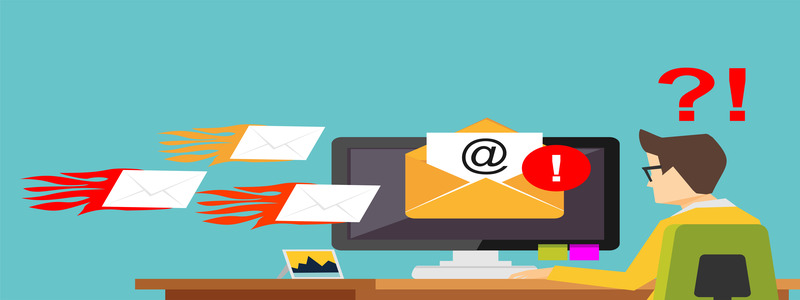 Whether you are a student, business person or an office goer, emails are an important part of your daily life. With the increasing use of this digital communication, spammers and scammers have started targeting users more frequently than a few years back. You often come across spam & phishing emails in your day-to-day work process, which make it necessary to spot the difference between the two to remain safe and take corrective action.
Whether you are a student, business person or an office goer, emails are an important part of your daily life. With the increasing use of this digital communication, spammers and scammers have started targeting users more frequently than a few years back. You often come across spam & phishing emails in your day-to-day work process, which make it necessary to spot the difference between the two to remain safe and take corrective action.
What is a spam email?
Spam emails are those type of communication, which are sent in bulk to motivate users to either purchase a product or avail a solution. Spammers send these types of emails in bulk to users, who may or may not be their target customers. If a spammer is sending a few thousands of emails, there are chances that a few recipients get trapped. Some of the common types of spam emails are related to Travel, Free Product, Loans and discount.
What is a phishing email?
On the other hand, a phishing email is a type of email communication, which is sent to gain sensitive information and financial details from internet users such as passwords, credit card number, bank account number etc. The attained information can be used to cause you with severe financial damage.
The main difference
The main difference between spam and phishing emails is that the former is used only for advertisement purposes, whereas the latter is used to steal confidential information of users.
How to identify phishing emails?
Now that you have understood that phishing emails are far more dangerous than spam emails, you need to be smart to identify those emails to prevent from being targeted. The following tips will help you identify phishing emails.
- A phishing email will have an eye-catching subject line with the intention to create panic or offer something unbelievable.
- Phishing emails may contain links clicking on which you will be directed to a malicious website, where you will be motivated to enter your personal details. These websites are created with the same look and feel as your genuine site.
- Most phishing emails contain attachments, which are loaded with spyware.
How to get prevented from being trapped?
Carefully monitor the following things when you are suspicious regarding an email that you have received.
- Double check the email id which has requested you to share the details. You can do so by typing the email id on google. If it’s from a popular company, you will get it in the search result. Another way is to directly call the company and check with their team regarding authenticity.
- Check the URL of the website which is seeking any kind of personal details from you. You can carefully monitor for spelling errors in the URL as no two website URLs can be same.
In this busy work environment, often people fail to adhere to cybersecurity guidelines and commit mistakes by clicking on phishing links. This one mistake can cause you with serious trouble and lead to comprising of your personal information.
- RaaS : The Dark Side of SaaS
- Hackers Target MOVEit Transfer’s Zero-Day Vulnerability, Emergency Patch Deployed
- How Scammers Are Utilizing ChatGPT? Few Tips To Be Safe
- World Backup Day: Why Data Backups are Important in Cybersecurity
- What is Social Engineering and How Cyber Criminals Use It
- Things To Know About Personally Identifiable Information (PII)
- What is Data Breach? Why and How It occurs? How To Prevent Data Breach


